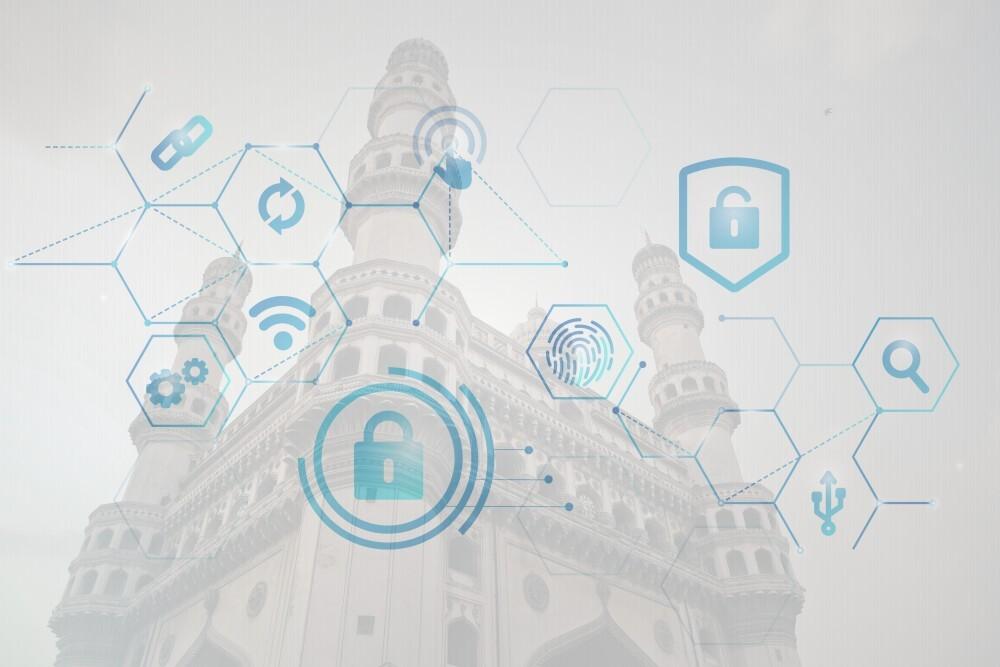
What if your system could sense a cyber-attack before it starts and stop it in its tracks? With machine learning in cybersecurity, you can accomplish this. The greatest challenge in cybersecurity today lies in the constant emergence of new and evolving attack methods. Cybersecurity agents use a defensive approach to defend from such attacks. As hackers become more and more innovative, defense is not enough. You need to sense attacks and take the stance of offense to secure your system!
What is Predictive Cybersecurity?
The technique of using Artificial Intelligence (AI) and machine learning (ML) to analyze patterns and predict cyber attacks is 'Predictive Cybersecurity'. AI models are developed by training them with data and user analytics to mimic human thinking and behavior.
Machine learning in cybersecurity acts like an extra layer of protection for your system, like the 'Are you a Robot?' captcha. The captcha tracks the path of the cursor and analyzes whether the captcha is being solved by a human.
The Power of Machine Learning in Cybersecurity
Cyber threat prediction using machine learning is highly beneficial as it can input vast amounts of metadata to improve its predictive analytics. ML can analyze data and patterns from past attacks and prevent similar threats from occurring in the future. It constantly learns from new data points and patterns which strengthen its ability to detect threats. ML in cybersecurity harnesses its ability to process and analyze data quickly to provide an accurate response. The flexibility of such applications to adapt to user activities while automating processes makes modern forms of cybersecurity attractive as against traditional systems.
How Machine Learning Models Predict Threats
Like a child going to school, an ML cybersecurity applications also gets trained using various algorithms for learning. These learning techniques help the AI model detect anomalies, classify data into categories, track patterns, etc. The algorithms strengthen the AI model's grasping power of past and continual data patterns on any device. Predictive cybersecurity thus allows the model to predict phishing attacks, DDoS attacks, malware detection, etc.
Some technologies used for this purpose are:
Graph Neural Networks (GNNs): Graph Neural Networks are a machine-learning model designed to process data points presented in the form of a graph, containing nodes and edges of a graph. This model is used to detect threats like phishing and fraud, by analyzing network interactions like user activity and patterns.
Adversarial Learning: Cybercriminals sometimes input manipulated data to trick systems, adversarial training models are designed to detect and report this activity. By simulating these attacks during training, these models become more resilient in detection.
Federated Learning: This approach helps with training the model collaboratively without sharing the raw data inside the system. Federated learning model is crucial for preserving user privacy while also improving threat detection.
Explainable AI (XAI): Explainable AI models are trained to be more interpretative and justify their decisions. XAI is crucial in helping analysts understand why the system flagged a certain action or a threat, making it easier to trust and act on the system's recommendations.
Reinforcement Learning (RL): This method uses a trial and error approach, wherein, the model learns to make decisions by recieving feedback in the form of rewards and punishment. RL is used for tasks like optimizing network defense strategies or detecting intrusions in systems.
Challenges and Limitations of ML in Predictive Cybersecurity
According to Dimension Market Research, the global market for AI in cybersecurity is projected to reach USD 147.5 billion by 2033. While AI/ML in predictive cybersecurity is necessary to stay ahead of cyber threats, it also, like all technology, has faults. Here are 4 of the biggest concerns:
- Cost Extensive: AI in cybersecurity is a complex technology that requires significant investment to research and develop a cost-effective, AI-driven solution.
- Data privacy and ethics: For predictive cybersecurity, AI requires access to vast amounts of data to train itself and detect any threatening concerns. With the rise in the number of frauds, scams, and data breaches, there is little trust in new technologies.
- Training data limitations and biases: Input of data is significant for machine learning. However, the data available for training is not always of the highest quality and might also have errors, which affects the accuracy of predictions.
- Complexity of evolving threats: Cyber criminals evolve their actions on the success and failures of their attempts. This makes the prediction of new attack strategies used by hackers difficult.
Future Trends in Machine Learning for Cybersecurity
Machine learning in cybersecurity is an application of technology that will keep evolving. Developing training models is necessary for enhancing the accuracy of the predictions. The advancements in training models include deep learning, reinforcement learning, natural language processing, explainable AI, etc. Future innovations in cybersecurity could bring the combination of machine learning with AI agents, blockchain, etc. This will call for strict principles to be put in place to regulate the use of this technology. Regulatory bodies will shape the future of ML-driven cybersecurity.
Conclusion
At the very first sign of danger, the circuit breaker shuts the flow of electricity. When utilized well, machine learning acts like a circuit breaker for the system. ML cybersecurity applications can prevent attacks with the help of cyber threats prediction. It absorbs data that is shared as an input and analyzes it to detect patterns and anomalies. With the training given to an AI model, it starts noticing behavioral patterns of the user and keeps track of what is ordinary and out of ordinary. It can sense an attack before it is deployed and tackle it with accuracy.
Although not a fool-proof system yet, predictive cybersecurity has the potential of becoming the next big thing in keeping ourselves safe in the virtual world.





